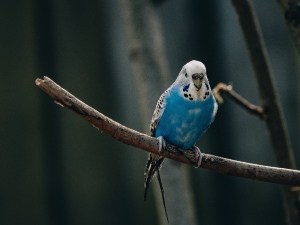
Your budgie’s beak is a specific size and length for a reason.
The correct size beak will help the bird effortlessly forge for food and communicate.
A beak that is too big or too small will hinder the bird
This article looks into how to know if your budgie’s beak is too long.
Table of Contents
How do I know if my budgie’s beak is too long?
The beak is one of the most important parts of your bird’s body, without it, the bird wouldn’t be able to find food, eat food, or, communicate with other birds.
Without it, the bird would suffer.
The bird would also suffer if its beak starts to get a little too long. Here is how to know if your bird’s beak is too long:
The bird can’t eat or drink:
If your bird can’t do simple beak tasks like eating and drinking then this may be because its beak has overgrown and that the beak is too long.
The bird can’t open its mouth:
Not only will your bird not be able to eat because of its elongated beak, the bird won’t be able to open its mouth either.
This happens when the upper portion of the bird’s beak gets so large that it envelops the bottom portion of the bird’s beak.
Its beak is too long for the species:
Another way to check if the bird’s beak is too long is to compare your budgie’s beak to the common beak length of the species.
If your bird’s beak is similar in size to the common beak size then your budgie’s beak is normal.
If your budgie’s beak is larger than normal then your bird’s beak is too long.
It has no break-trimming toys:
Beak trimming is how birds keep their beaks maintained.
If your bird doesn’t have access to anything to maintain its beak with, like beak trimming toys, cuttlebone, or any abrasive surfaces in the environment, then the bird’s beak is likely overgrown or will be soon.
What to do:
Budgie beaks, in the wild, will wear down as the bird uses it.
Regular use of the beak will keep it worn down and maintained in the wild.
If your bird doesn’t have any rough surfaces that it can use to grind its beak down with then you’d need to provide these.
Cuttlebones are usually given to birds to help maintain their beaks
If your bird is quite big then you may want to consider giving the bird wooden toys as well, these will help the bird maintain its beak.
Giving the bird hard foods that need to be broken down will also help with the maintenance of the beak.
Foods that you can give your bird include nuts and crunchy vegetables.
If your bird’s beak is very long then you may also want to consider taking your bird to the vet to have your bird’s beak trimmed.
The beak is partly supplied with blood, so, trimming your budgie’s beak, without having extensive experience on how to do this, is not recommended as you can easily accidentally trim too muck beak off and cause the bird to bleed.
If you enjoyed this article then you may also be interested in other bird related articles. Here are some articles that you may be interested in: Stress Seizures In Birds, Bird Died After Bath, Budgie Twitching Leg, Canary Twitching Head, Cockatiel leg twitching, Why Does My Cockatiel Love My Feet?, Why Does My Cockatiel Sing To My Feet?, Why Is My Budgies Head Bleeding?, What To Do If Budgie Beak Is Too Long?

